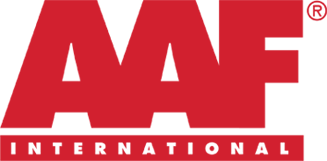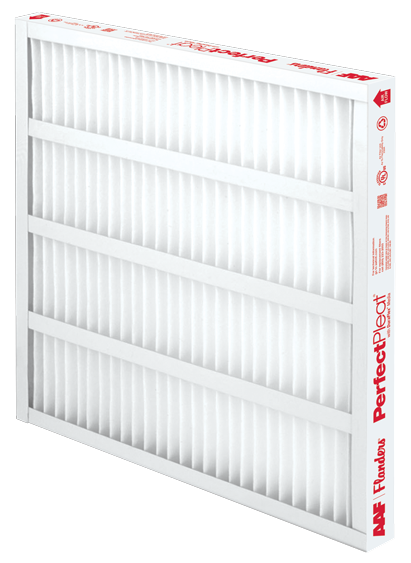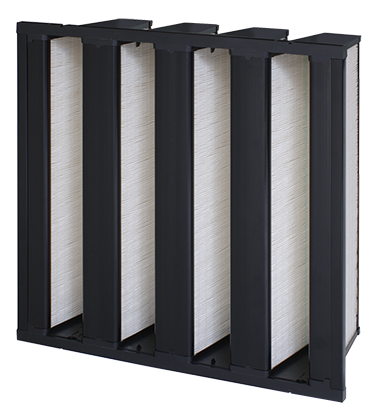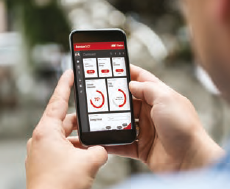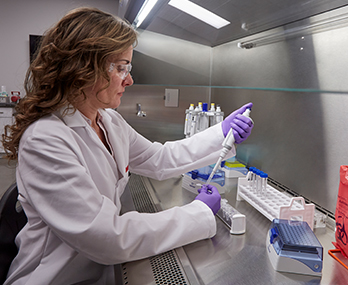AMERICAN AIR FILTER
COMPANY, INC.
VISIONAIR
CLEAN™ WEBSITE TERMS OF USE
Last Modified: December 2018
IMPORTANT — CAREFULLY READ: THESE TERMS OF USE ARE
A LEGAL CONTRACT BETWEEN YOU AND AMERICAN AIR FILTER COMPANY, INC. BY CLICKING
THE “ACCEPTED ICON” ASSOCIATED WITH THIS PAGE, OR REGISTERING FOR USE OF THIS
SITE, WHICH WILL SERVE AS YOUR SIGNATURE, YOU AGREE TO CONDUCT TRANSACTIONS
ELECTRONICALLY AND TO BE BOUND BY THESE TERMS. IF YOU DO NOT AGREE TO THESE
TERMS, YOU SHOULD EXIT THIS PAGE WITHOUT ACCEPTING AND REFRAIN FROM ALL FURTHER
USE OF THIS WEBSITE.
Acceptance of
the Terms of Use
These terms of use are entered into by and among (i)
American Air Filter Company, Inc. (“AAF”, “we”
or “us”), (ii) you, the individual accessing this Website as a
representative of a customer of AAF or other entity for which AAF has approved
access, and (iii) our customer, a potential customer or other person or entity
for which AAF has approved access (collectively, “Customer”). The
following terms and conditions, together with any documents they expressly incorporate
by reference (collectively, these “Terms of Use”), govern your
access to and use of www.aafintl.com/aafvisionairclean,
including any content, functionality and services offered on or through www.aafintl.com/aafvisionairclean (the “Website”), whether as a guest or a registered user.
Please read the Terms of Use carefully before you start to
use the Website. By using the Website or by clicking to accept or agree to
the Terms of Use when this option is made available to you, you accept and
agree to be bound and abide by these Terms of Use and our VisionAir Clean Privacy
Policy, found at https://www.aafintl.com/en/commercial/about-us/general-information
(the “Privacy Policy”), and incorporated herein by reference, and you agree to
same on behalf of, and as a representative of, our Customer. If you do not
want to agree to these Terms of Use or the Privacy Policy, you must not access
or use the Website.
This Website is offered and available to users who are 18
years of age or older and whose access is approved by AAF. By using this
Website, you represent and warrant that you are of legal age to form a binding
contract with AAF and meet all of the foregoing eligibility requirements and
you are not accessing this Website through a false or misleading user name and
are affiliated with the organization as you have represented. If you do not
meet all of these requirements, you must not access or use the Website.
Changes to the
Terms of Use
We may revise and update these Terms of Use from time to
time in our sole discretion. All changes are effective immediately when we post
them, and apply to all access to, and use of, the Website thereafter. However,
any changes to dispute resolution provisions will not apply to any disputes for
which the parties have actual notice on or prior to the date the change is
posted on the Website.
Your continued use of the Website following the posting of
revised Terms of Use means that you accept and agree to the changes. You are
expected to check this page from time to time so you are aware of any changes,
as they are binding on you. You can determine when these Terms of Use were last
revised by referring to the “Last Modified” line at the beginning. In the event
that we offer any awards, promotions or contests, you agree that you are subject
to any additional posted terms, rules or guidelines applicable to such
activity, which are hereby incorporated by reference into these Terms of Use. We
reserve the right to modify or discontinue this Website at any time without
notice to you, and we will have no liability to you if we do so.
Accessing the
Website and Account Security
We reserve the right to withdraw or amend this Website, and
any service or material we provide on the Website, in our sole discretion
without notice. We will not be liable if for any reason all or any part of the
Website is unavailable at any time or for any period. From time to time, we may
restrict access to some parts of the Website, or the entire Website, to users,
including registered users.
You are responsible for:
·
Making all arrangements necessary for you to have access to the
Website.
·
Ensuring that all persons who access the Website through your
internet connection are aware of these Terms of Use and comply with them.
To access the Website or some of the resources it offers,
you may be asked to provide certain registration details, such as your
affiliation with an organization, or other information. It is a condition of
your use of the Website that all the information you provide on the Website is
correct, current and complete. You agree that all information you provide to
register with this Website or otherwise, including but not limited to through
the use of any interactive features on the Website, is governed by the Privacy
Policy, and you consent to all actions we take with respect to your information
consistent with our Privacy Policy.
If you choose, or are provided with, a user name, password
or any other piece of information as part of our security procedures, you must
treat such information as confidential, and you must not disclose it to any
other person or entity. You also acknowledge that your account is personal to
you and agree not to provide any other person with access to this Website or
portions of it using your user name, password or other security information.
You agree to notify us immediately of any unauthorized access to or use of your
user name or password or any other breach of security. You also agree to ensure
that you exit from your account at the end of each session. You should use particular
caution when accessing your account from a public or shared computer so that
others are not able to view or record your password or other personal
information.
We have the right to disable any user name, password or
other identifier, whether chosen by you or provided by us, at any time in our
sole discretion for any or no reason, including if, in our opinion, you have
violated any provision of these Terms of Use or if you are no longer affiliated
with a Customer.
Electronic Communication
When you use the assessment function of the Website,
purchase products, complete any applications or send emails to us, you are
communicating with us electronically. You consent to receive communications
from us electronically. We will communicate with you by email or through
notices on this Website, related websites or by hard copy. You agree that all
agreements, notices, disclosures or other information provided to you
electronically satisfy any legal requirement that any such communication be in
writing.
Confidentiality
You
acknowledge and agree that the Website contains confidential, proprietary,
trade secrets, and other non-public information of AAF and its affiliates and
customers and end users of AAF’s products and services which may include
pricing; financial information; strategies; business plans; market studies; technical
information on AAF’s products and services; drawings; designs; specifications;
models; samples; and customer and end user information including names,
address, telephone numbers, fax numbers, email addresses, customer lists, and
customer order history (collectively, “Confidential Information”). Except
as required for Customer, and you as Customer’s representative, to fulfill
obligations to us as set out in any agreement between Customer and AAF or to
use the services offered on the Website for internal business purposes, you agree,
on behalf of yourself and Customer, that you will (i) not use the Confidential
Information; (ii) protect and safeguard the confidentiality of all such
Confidential Information with at least the same degree of care as you would
protect your own confidential information, but in no event with less than a
commercially reasonable degree of care; (iii) not disclose any of the
Confidential Information to any person, even if in furtherance of the agreement
between AAF and Customer, unless such person has agreed to not use or disclose
such Confidential Information except to use products and services as allowed
under the agreement governing the sale or use; and (iv) not disclose any
Confidential Information, or permit it to be accessed or used, for any purpose
or in any manner to AAF’s detriment, including, without limitation, to reverse
engineer, disassemble, decompile or design around AAF’s proprietary products,
services and intellectual property.
Confidential
Information does not include information that (i) at the time of disclosure is,
or thereafter becomes, generally available to and known by the public other
than as a result of, directly or indirectly, any violation of these Terms of
Use; (ii) at the time of disclosure is, or thereafter becomes, available to you
on a non-confidential basis from a third party source that is not prohibited
from disclosing such information; (iii) was known by or in the possession of you
or Customer, as established by documentary evidence, before being disclosed on
the Website or otherwise with an obligation of confidentiality; or (iv) was
independently developed by you, as established by documentary evidence, without
reference to or use of, in whole or in part, any Confidential Information.
The obligations
of confidentiality set out herein shall survive termination of these Terms of
Use or your access to the Website.
Intellectual Property Rights
The Website and its entire contents, features and
functionality (including but not limited to all information, software, text,
displays, images, video and audio, and the design, selection and arrangement
thereof), are owned by AAF, its licensors or other providers of such material
and are protected by United States and international copyright, trademark,
patent, trade secret and other intellectual property or proprietary rights
laws. Accordingly, the material and content available on the Website may not be
copied, distributed, republished, uploaded, posted or transmitted in any way except
as specifically allowed under the terms related to the materials or without the
prior written consent of AAF. Modification or use of the material or content on
the Website, except as expressly provided in these Terms of Use or terms
specific to those products or services, violates our or third parties’ intellectual
property rights. Neither title nor intellectual property rights are transferred
to you by access to the Website.
If you submit suggestions, proposals, comments or other
materials (collectively “Submissions”) within the Website you understand
and agree that AAF (i) will have no obligation to keep your Submissions
confidential; (ii) will have no obligation to return your Submissions or
respond in any way; and (iii) may use your Submissions for any purpose in any
way without notice or compensation to you.
These Terms of Use permit you to use the Website as a
representative of the Customer only. Except as necessary to perform your duties
as a representative of the Customer and to fulfill the obligations of Customer
as set out in any agreement Customer may have with AAF, you must not
reproduce, distribute, modify, create derivative works of, publicly display,
publicly perform, republish, download, store or transmit any of the material on
our Website, except as follows:
·
Your computer may temporarily store copies of such materials in RAM
incidental to your accessing and viewing those materials.
·
You may store files that are automatically cached by your Web
browser for display enhancement purposes.
·
If we provide desktop, mobile or other applications for download,
you may download a single copy to your computer or mobile device solely for
your use as a representative of the Customer, provided you agree to be bound by
the applicable end user license agreement for such applications.
·
If we provide social media or interactive features with certain
content, you may take such actions as are enabled by such features.
You must not:
·
Modify copies of any materials from this Website except as
necessary to perform your duties as a representative of Customer and to fulfill
the obligations of Customer as set out in any agreement Customer may have with AAF.
·
Delete or alter any copyright, trademark or other proprietary
rights notices from copies of materials from this Website.
If you print, copy, modify, download or otherwise use or
provide any other person with access to any part of the Website in breach of
the Terms of Use, your right to use the Website will cease immediately and you
must, at our option, return or destroy any copies of the materials you have
made. No right, title or interest in or to the Website or any content on the
Website is transferred to you or Customer, and all rights not expressly granted
are reserved by AAF. Any use of the Website not expressly permitted by these
Terms of Use is a breach of these Terms of Use and may violate copyright,
trademark and other laws.
Trademarks
The AAF name and all related names, logos, product and
service names, designs and slogans are trademarks of AAF or its affiliates or
licensors. You must not use such marks without the prior written permission of AAF.
All other names, logos, product and service names, designs and slogans on this
Website are the trademarks of their respective owners.
Copyright Complaints
AAF respects the intellectual property of others. If you
believe that your work has been copied in a way that constitutes copyright
infringement, please follow the notice and procedures for making claims of
copyright infringement described below in the section entitled “Copyright
Infringement.”
Prohibited
Uses
You may use the Website only for lawful purposes and in
accordance with these Terms of Use. You agree not to use the
Website:
·
In any way that violates any applicable federal, state, local or
international law or regulation (including, without limitation, any laws
regarding the export of data or software to and from the US or other
countries).
·
For the purpose of exploiting, harming or attempting to exploit
or harm minors or others in any way by exposing them to inappropriate content,
asking for personally identifiable information or otherwise.
·
To send, knowingly receive, upload, download, use or re-use any
material which does not comply with the standards set out in these Terms of
Use.
·
To delete or revise any material submitted by any other person or
entity.
·
To transmit, or procure the sending of, any advertising or
promotional material without our prior written consent, including any “junk
mail”, “chain letter” or “spam” or any other similar solicitation.
·
To misrepresent your affiliation with AAF or otherwise hold
yourself or Customer out as an employee or affiliate (other than as allowed in any
agreement between AAF and Customer) of AAF or otherwise as having authority to
bind AAF to any agreement with any third party.
·
To impersonate or attempt to impersonate AAF, an AAF employee,
another user or any other person or entity (including, without limitation, by
using e-mail addresses or screen names associated with any of the foregoing).
·
To engage in any other conduct that restricts or inhibits anyone’s
use or enjoyment of the Website, or which, as determined by us, may harm AAF or
users of the Website or expose them to liability.
Additionally, you agree not
to:
·
Use the Website in any manner that could disable, overburden,
damage or impair the site or interfere with any other party’s use of the
Website, including their ability to engage in real time activities through the
Website.
·
Use any robot, spider or other automatic device, process or means
to access the Website for any purpose, including monitoring or copying any of
the material on the Website.
·
Use any manual process to monitor or copy any of the material on
the Website or for any other unauthorized purpose without our prior written
consent.
·
Use any device, software or routine that interferes with the
proper working of the Website.
·
Introduce any viruses, trojan horses, worms, logic bombs or other
material which is malicious or technologically harmful.
·
Attempt to probe, scan or test the vulnerability of the system or
network or to breach security or authentication measures.
·
Interfere or attempt to interfere with service to any user, host
or network, including, without limitation, by using a virus, overloading, “flooding”,
“spamming”, “mail bombing” or “crashing.”
·
Send any unsolicited email or forge any TCP/IP packet header or
any part of the header information in any email or newsgroup posting.
·
Attempt to gain unauthorized access to, interfere with, damage or
disrupt any part of the Website, the server on which the Website is stored, or
any server, computer or database connected to the Website.
·
Attack the Website via a denial-of-service attack or a
distributed denial-of-service attack.
·
Otherwise attempt to interfere with the proper working of the
Website.
Taking any of these actions may result in
civil or criminal liability. AAF may investigate occurrences that it believes
may involve such violations, and cooperate with, law enforcement authorities in
prosecuting users who are involved in such violations.
User Content
The Website may contain message boards, chat rooms,
personal web pages or profiles, forums, bulletin boards, and other interactive
features (collectively, “Interactive Services”) that allow
users to post, submit, publish, display or transmit to other users or other
persons (hereinafter, “post”) content or materials
(collectively, “User Content”) on or through the
Website.
All User Content must comply with the content standards set
out in these Terms of Use.
Any User Content you post to the site will be considered
non-confidential and non-proprietary. By providing any User Content on the
Website, you grant to AAF the worldwide, perpetual, royalty-free, irrevocable,
nonexclusive right and license, sublicensable through multiple tiers, without
compensation to you, to use, reproduce, distribute, adapt (including without
limitation edit, modify, translate and reformat), create derivative works of,
transmit, publicly display, publicly perform, digitally perform, make, have
made, sell, offer for sale and import User Content, in any media now known or
hereafter developed, for any purpose whatsoever, commercial or otherwise. You
further irrevocably waive any “moral rights” or other rights with respect to
attribution of authorship or integrity of materials regarding any User Content
that you may have under any applicable law or under any legal theory. This
section will survive termination of these Terms for any reason.
You represent and warrant that:
·
You own or control all rights in and to User Content you post and
have the right to grant the rights described above to us and our affiliates and
service providers, and each of their and our respective licensees, successors
and assigns.
·
Your provision of User Content through this Website complies with
all applicable laws, rules and regulations.
·
Without our express prior written consent, you will not use the Website
for any commercial purpose other than as related to Customer’s relationship with
AAF, including but not limited to communicating or facilitating any commercial
advertisement or solicitation through the Website.
·
All of your User Content does and will comply with these Terms of
Use.
We are not responsible, or liable to any third party, for
the content or accuracy of any User Content posted by you or any other user of
the Website. You acknowledge and agree that we have no control over, and will
have no liability for any damages resulting from, the use (including without
limitation re-publication) or misuse by any third party of information
voluntarily made public by posting User Content on this Website. IF YOU CHOOSE
TO MAKE ANY OF YOUR PERSONALLY IDENTIFIABLE OR OTHER INFORMATION PUBLICLY
AVAILABLE ON THE WEBSITE OR OTHER SOCIAL MEDIA, YOU DO SO AT YOUR OWN RISK.
Monitoring and Enforcement; Termination
We have the right to:
·
Edit, remove or refuse to post any User Content for any or no
reason in our sole discretion.
·
Take any action with respect to any User Content that we deem
necessary or appropriate in our sole discretion, including if we believe that
such User Content: (i) violates these Terms of Use, including any content standards,
(ii) infringes any intellectual property right or other right of any person or
entity, (iii) threatens the personal safety of users of the Website or the
public or (iv) could create liability for AAF.
·
Disclose your identity or other information about you to Customer
any third party who claims that your actions or that material posted by you
violates their rights, including their intellectual property rights or their
right to privacy.
·
Take appropriate legal action, including without limitation,
referral to law enforcement, for any illegal or unauthorized use of the
Website.
·
Terminate or suspend your access to all or part of the Website
for any or no reason, including without limitation, any violation of these
Terms of Use.
Without limiting the foregoing, we have the right to fully
cooperate with any law enforcement authorities or court order requesting or
directing us to disclose the identity or other information of anyone posting
any materials on or through the Website. YOU WAIVE AND HOLD HARMLESS AAF AND
ITS AFFILIATES, LICENSEES AND SERVICE PROVIDERS FROM ANY CLAIMS RESULTING FROM
ANY ACTION TAKEN BY AAF OR ANY OF THE FOREGOING PARTIES DURING OR AS A RESULT
OF ITS INVESTIGATIONS AND FROM ANY ACTIONS TAKEN AS A CONSEQUENCE OF
INVESTIGATIONS BY EITHER AAF OR SUCH PARTIES OR LAW ENFORCEMENT AUTHORITIES.
User Content includes the opinions, statements and other
content of third parties. We are not responsible for screening, monitoring or
verifying such content, including such content’s accuracy, reliability or compliance
with copyright or other laws. Any opinions, statements or other materials made
available by third parties through this Website are those of such third parties
and not of AAF, and AAF does not endorse any such opinions, statements or
materials. You understand and acknowledge that you are responsible for any User
Content you submit or contribute, and you, not AAF, have full responsibility
for such content, including its legality, reliability, accuracy and
appropriateness. We may remove objectionable statements or other content from
the Website at any time. You understand and accept that removed content may
persist in back-up copies for a reasonable period of time. However, we do not
undertake to review all material before it is posted on the Website, and cannot
ensure prompt removal of objectionable material after it has been posted.
Accordingly, we assume no liability for any action or inaction regarding
transmissions, communications or content provided by any user or third party.
We have no liability or responsibility to anyone for performance or
nonperformance of the activities described in this section.
Content
Standards
These content standards apply to any and all User Content
and use of Interactive Services. User Content must in its entirety comply with
all applicable federal, state, local and international laws and regulations.
Without limiting the foregoing, User Content must not:
·
Contain any material which is defamatory, obscene, indecent,
abusive, offensive, harassing, violent, hateful, inflammatory or otherwise
objectionable.
·
Promote sexually explicit or pornographic material, violence, or
discrimination based on race, sex, religion, nationality, disability, sexual
orientation or age.
·
Infringe any patent, trademark, trade secret, copyright or other
intellectual property or other rights of any person.
·
Violate any obligations of confidentiality by which you or Customer
are bound, whether to AAF or otherwise.
·
Violate the legal rights (including the rights of publicity and
privacy) of others or contain any material that could give rise to any civil or
criminal liability under applicable laws or regulations or that otherwise may
be in conflict with these Terms of Use and our Privacy Policy.
·
Be likely to deceive any person.
·
Promote any illegal activity, or advocate, promote or assist any
unlawful act.
·
Cause annoyance, inconvenience or needless anxiety or be likely
to upset, embarrass, alarm or annoy any person.
·
Impersonate any person, or misrepresent your identity or
affiliation with any person or organization.
·
Involve contests, sweepstakes and other similar sales promotions,
barter or advertising.
·
Give the impression that they emanate from or are endorsed by us
or any other person or entity, if this is not the case.
Copyright
Infringement
We take claims of copyright infringement seriously. We will
respond to notices of alleged copyright infringement that comply with
applicable law. If you believe that any User Content or any other materials
accessible on or from this Website infringe your copyright, please send a
written notice of copyright infringement to our Copyright Agent who may be contacted
as follows:
Copyright Agent
VisionAir Clean Support
AAF International
9920 Corporate Campus Drive, Suite 2200
Louisville, Kentucky 40223 USA
Phone: (502) 637-0011
Fax: (502) 637-0011
Email: VisionAirCleanSupport@aafintl.com
In accordance with the Online Copyright Infringement
Liability Limitation Act of the Digital Millennium Copyright Act (17 U.S.C.
§512) (“DMCA”), the written notice (the “DMCA Notice”) must
include substantially the following:
·
A physical or electronic signature of the person authorized to
act on behalf of the owner of the copyright interest.
·
Identification of the copyrighted work you believe to have been
infringed or, if the claim involves multiple works on the Website, a
representative list of such works.
·
Identification of the material you believe to be infringing in a
sufficiently precise manner to allow us to locate that material.
·
Adequate information by which we can contact you (including your
name, postal address, telephone number, and, if available, email address).
·
A statement that you have a good faith belief that use of the
copyrighted material is not authorized by the copyright owner, its agent or the
law.
·
A statement that the information in the written notice is
accurate.
·
A statement, under penalty of perjury, that you are authorized to
act on behalf of the copyright owner.
It is the policy of AAF to terminate the user accounts of
repeat infringers. However, if you fail to comply with all of the requirements
of Section 512(c)(3) of the DMCA, your DMCA Notice may not be effective. Please
be aware that if you knowingly materially misrepresent that material or
activity on the Website is infringing your copyright, you may be held liable
for damages (including costs and attorneys’ fees) under Section 512(f) of the
DMCA.
If you believe in good faith that someone has wrongly filed
a notice of copyright infringement against you, the DMCA permits you to send a
counter-notice. Notices and counter-notices must meet the then-current
statutory requirements imposed by the DMCA. See copyright.gov for details.
We endeavor to respond quickly to the concerns of rights
owners about any alleged infringement. We
suggest that you consult your legal advisor before filing a notice or
counter-notice.
Reliance on
Information Posted or Obtained through the Website
THE INFORMATION PRESENTED ON OR THROUGH THE WEBSITE,
INCLUDING ANY RESULTS, IS MADE AVAILABLE SOLELY FOR GENERAL INFORMATION
PURPOSES. WE DO NOT WARRANT THE ACCURACY, COMPLETENESS OR USEFULNESS OF THIS
INFORMATION. ANY RELIANCE YOU PLACE ON SUCH INFORMATION IS STRICTLY AT YOUR OWN
RISK. WE DISCLAIM ALL LIABILITY AND RESPONSIBILITY ARISING FROM ANY RELIANCE
PLACED ON SUCH MATERIALS BY YOU OR ANY OTHER VISITOR TO THE WEBSITE, OR BY
ANYONE WHO MAY BE INFORMED OF ANY OF ITS CONTENTS.
This Website includes content provided by third parties,
including materials provided by other users, bloggers and third-party
licensors, syndicators, aggregators and/or reporting services. All statements
and/or opinions expressed in these materials, and all articles and responses to
questions and other content, other than the content provided by AAF, are solely
the opinions and the responsibility of the person or entity providing those
materials. These materials do not necessarily reflect the opinion of AAF. We
are not responsible, or liable to you or any third party, for the content or
accuracy of any materials provided by any third parties.
Changes to the Website
We may update the content on this Website from time to
time, but its content is not necessarily complete or up-to-date. Any of the
material on the Website may be out of date at any given time, and we are under
no obligation to update such material.
Information
About You and Your Visits to the Website
All information we collect on this Website is subject to
our Privacy Policy. By using the Website, you consent to all actions taken by
us with respect to your information in compliance with the Privacy Policy.
Online
Purchases and Other Terms and Conditions
All purchases through our site or other transactions for
the sale of goods, services or information formed through the Website or as a
result of visits made by you are governed by our Terms and Conditions of Sale located
at https://www.aafintl.com/en/commercial/about-us/general-information, which
are hereby incorporated into these Terms of Use.
Additional terms and conditions may also apply to specific
portions, services or features of the Website. All such additional terms and
conditions are hereby incorporated by this reference into these Terms of Use.
Website Social Media Features
This Website may provide certain social media features that
enable you to:
·
Link from your own or certain third-party websites to certain
content on this Website.
·
Send e-mails or other communications with certain content, or
links to certain content, on this Website.
·
Cause limited portions of content on this Website to be displayed
or appear to be displayed on your own or certain third-party websites.
You may use these features solely as they are provided by
us, and solely with respect to the content they are displayed with and
otherwise in accordance with any additional terms and conditions we provide
with respect to such features. Subject to the foregoing, you must not:
·
Establish a link from any website except as expressly authorized
by us.
·
Cause the Website or portions of it to be displayed, or appear to
be displayed by, for example, framing, deep linking or in-line linking, on any
other site.
·
Link to any part of the Website except as expressly authorized by
us.
·
Otherwise take any action with respect to the materials on this
Website that is inconsistent with any other provision of these Terms of Use.
You agree to cooperate with us in causing any unauthorized
framing or linking immediately to cease. We reserve the right to withdraw
linking permission without notice.
We may disable all or any social media features and any
links at any time without notice in our discretion.
Links from the
Website
If the Website contains links to other sites and resources
provided by third parties, these links are provided for your convenience only.
This includes links contained in advertisements, including banner
advertisements and sponsored links. Any charges or obligations you incur in
your dealings with these third parties are your responsibility. We have no
control over the contents of those sites or resources, and accept no
responsibility for them or for any loss or damage that may arise from your use
of them. We make no representation or warranty regarding any content, goods
and/or services provided by any third party even if linked to from our Website,
and will not be liable for any claim relating to any third party content, goods
and/or services. The linked sites are not under the control of AAF and may
collect data or solicit personal information from you. AAF is not responsible
for any actions or omissions by such sites, for their content, business
practices or privacy policies, or for their collection, use or disclosure of
any information. Further, the inclusion of any link does not imply endorsement
by AAF of any linked sites. YOU AGREE THAT YOUR USE OF THIRD PARTY SITES AND
RESOURCES AND ANY CONTENT, INFORMATION, DATA, ADVERTISING, PRODUCTS, SERVICES
OR OTHER MATERIALS ON OR AVAILABLE THROUGH SUCH SITES AND RESOURCES IS AT YOUR
OWN RISK AND IS SUBJECT TO THE TERMS AND CONDITIONS OF USE APPLICABLE TO SUCH
SITES AND RESOURCES.
Geographic Restrictions
The owner of the Website is based in the state of Kentucky
in the United States. We provide this Website for use only by persons located
in the United States. We make no claims that the Website or any of its content
is accessible or appropriate outside of the United States. Access to the
Website may not be legal by certain persons or in certain countries. If you
access the Website from outside the United States, you do so on your own
initiative and are responsible for compliance with local laws.
Disclaimer of
Warranties
You understand that we cannot and do not guarantee or
warrant that files available for downloading from the internet or the Website
will be free of viruses or other destructive code. You are responsible for
implementing sufficient procedures and checkpoints to satisfy your particular
requirements for anti-virus protection and accuracy of data input and output,
and for maintaining a means external to our site for any reconstruction of any
lost data. WE WILL NOT BE LIABLE FOR ANY LOSS OR DAMAGE CAUSED BY A DISTRIBUTED
DENIAL-OF-SERVICE ATTACK, VIRUSES OR OTHER TECHNOLOGICALLY HARMFUL MATERIAL
THAT MAY INFECT YOUR COMPUTER EQUIPMENT, COMPUTER PROGRAMS, DATA OR OTHER
PROPRIETARY MATERIAL DUE TO YOUR USE OF THE WEBSITE OR ANY SERVICES OR ITEMS
OBTAINED THROUGH THE WEBSITE OR TO YOUR DOWNLOADING OF ANY MATERIAL POSTED ON
IT, OR ON ANY WEBSITE LINKED TO IT.
YOUR USE OF THE WEBSITE, ITS CONTENT AND ANY SERVICES OR
ITEMS OBTAINED THROUGH THE WEBSITE IS AT YOUR OWN RISK. THE WEBSITE, ITS
CONTENT AND ANY SERVICES OR ITEMS OBTAINED THROUGH THE WEBSITE ARE PROVIDED ON
AN “AS IS” AND “AS AVAILABLE” BASIS, WITHOUT ANY WARRANTIES OF ANY KIND, EITHER
EXPRESS OR IMPLIED. NEITHER AAF NOR ANY PERSON ASSOCIATED WITH AAF MAKES ANY
WARRANTY OR REPRESENTATION WITH RESPECT TO THE COMPLETENESS, SECURITY,
RELIABILITY, QUALITY, ACCURACY OR AVAILABILITY OF THE WEBSITE OR ANY RESULTS OR
INFORMATION OBTAINED THROUGH THE WEBSITE. WITHOUT LIMITING THE FOREGOING,
NEITHER AAF NOR ANYONE ASSOCIATED WITH AAF REPRESENTS OR WARRANTS THAT THE
WEBSITE, ITS CONTENT OR ANY SERVICES OR ITEMS OBTAINED THROUGH THE WEBSITE WILL
BE ACCURATE, RELIABLE, ERROR-FREE OR UNINTERRUPTED, THAT DEFECTS WILL BE
CORRECTED, THAT OUR WEBSITE OR THE SERVER THAT MAKES IT AVAILABLE ARE FREE OF
VIRUSES OR OTHER HARMFUL COMPONENTS OR THAT THE WEBSITE OR ANY SERVICES OR
ITEMS OBTAINED THROUGH THE WEBSITE WILL OTHERWISE MEET YOUR NEEDS OR
EXPECTATIONS.
AAF HEREBY DISCLAIMS ALL WARRANTIES OF ANY KIND, WHETHER
EXPRESS OR IMPLIED, STATUTORY OR OTHERWISE, INCLUDING BUT NOT LIMITED TO ANY
WARRANTIES OF ACCURACY, MERCHANTABILITY, NON-INFRINGEMENT AND FITNESS FOR
PARTICULAR PURPOSE.
THE FOREGOING DOES NOT AFFECT ANY WARRANTIES WHICH CANNOT
BE EXCLUDED OR LIMITED UNDER APPLICABLE LAW.
Limitation on
Liability
IN NO EVENT WILL AAF, ITS AFFILIATES OR THEIR LICENSORS,
SERVICE PROVIDERS, EMPLOYEES, AGENTS, OFFICERS OR DIRECTORS BE LIABLE FOR
DAMAGES OF ANY KIND, INCLUDING ANY DIRECT, INDIRECT, SPECIAL, INCIDENTAL,
CONSEQUENTIAL OR PUNITIVE DAMAGES, UNDER ANY LEGAL THEORY, ARISING OUT OF OR IN
CONNECTION WITH YOUR USE, OR INABILITY TO USE, THE WEBSITE, ANY WEBSITES LINKED
TO IT, ANY CONTENT ON THE WEBSITE OR SUCH OTHER WEBSITES OR ANY SERVICES OR
ITEMS OBTAINED THROUGH THE WEBSITE OR SUCH OTHER WEBSITES, INCLUDING BUT NOT
LIMITED TO, DAMAGES FOR PERSONAL INJURY, PAIN AND SUFFERING, EMOTIONAL
DISTRESS, LOSS OF REVENUE, LOSS OF PROFITS, LOSS OF BUSINESS OR ANTICIPATED
SAVINGS, LOSS OF USE, LOSS OF GOODWILL, LOSS OF DATA, AND WHETHER CAUSED BY
TORT (INCLUDING NEGLIGENCE), BREACH OF CONTRACT OR OTHERWISE, EVEN IF
FORESEEABLE.
THE FOREGOING DOES NOT AFFECT ANY LIABILITY WHICH CANNOT BE
EXCLUDED OR LIMITED UNDER APPLICABLE LAW.
Indemnification
You agree to defend, indemnify and hold harmless AAF, its
affiliates, licensors and service providers, and its and their respective
officers, directors, employees, contractors, agents, licensors, suppliers,
successors and assigns from and against any claims, liabilities, damages,
judgments, awards, losses, costs, expenses or fees (including reasonable
attorneys’ fees) arising out of or relating to your violation of these Terms of
Use or your use of the Website, including, but not limited to, your User
Content, any use of the Website’s content, services and products other than as
expressly authorized in these Terms of Use or your use of any information
obtained from the Website.
Governing Law
and Jurisdiction
All matters relating to the Website and these Terms of Use
and any dispute or claim arising therefrom or related thereto (in each case,
including non-contractual disputes or claims), shall be governed by and
construed in accordance with the internal laws of the Commonwealth of Kentucky,
USA, without giving effect to any choice or conflict of law provision or rule.
Any legal suit, action or proceeding arising out of, or
related to, these Terms of Use or the Website shall be instituted exclusively
in the federal courts of the United States or the courts of the Commonwealth of
Kentucky, in each case located in the City of Louisville and County of Jefferson
although we retain the right to bring any suit, action or proceeding against
you for breach of these Terms of Use in your country of residence or any other
relevant country. You waive any and all objections to the exercise of
jurisdiction over you by such courts and to venue in such courts.
Arbitration
At AAF’s sole discretion, it may require you to submit any
disputes arising from the use of these Terms of Use or the Website, including
disputes arising from or concerning their interpretation, violation,
invalidity, non-performance or termination, to final and binding arbitration
under the Rules of Arbitration of the American Arbitration Association applying
Kentucky law.
Limitation on
Time to File Claims
ANY CAUSE OF ACTION OR CLAIM YOU MAY HAVE ARISING OUT OF OR
RELATING TO THESE TERMS OF USE OR THE WEBSITE MUST BE COMMENCED WITHIN ONE (1)
YEAR AFTER THE CAUSE OF ACTION ACCRUES; OTHERWISE, SUCH CAUSE OF ACTION OR
CLAIM IS PERMANENTLY BARRED.
Waiver and Severability
No waiver by AAF of any term or condition set forth in
these Terms of Use shall be deemed a further or continuing waiver of such term
or condition or a waiver of any other term or condition, and any failure of AAF
to assert a right or provision under these Terms of Use shall not constitute a
waiver of such right or provision.
If any provision of these Terms of Use is held by a court
or other tribunal of competent jurisdiction to be invalid, illegal or
unenforceable for any reason, such provision shall be eliminated or limited to
the minimum extent such that the remaining provisions of the Terms of Use will
continue in full force and effect.
Entire
Agreement
These Terms of Use, our Privacy Policy, Terms and
Conditions of Sale, and all other applicable license agreements or terms of use
that may apply to any feature or function made available through the Website constitute
the sole and entire agreement between you and American Air Filter Company, Inc.
with respect to the Website and supersede all prior and contemporaneous
understandings, agreements, representations and warranties, both written and
oral, with respect to the Website. In the event of any inconsistency between
these Terms of Use and the terms of any other applicable document referenced
herein, the more restrictive terms shall control to resolve such inconsistency.
Notices
We may notify you via postings on www.aafintl.com/aafvisionairclean,
or via e-mail or any other communications means you provide to us. If you are a
user in the United States, all notices given by you or required from you under
these Terms of Use or the Privacy Policy must be in writing and addressed to: AAF
International, Attn: VisionAir Clean Support, 9920 Corporate Campus Drive,
Suite 2200, Louisville, Kentucky 40223 USA or if relating to copyright
infringement, given as provided in the “Copyright Infringement” section of
these Terms of Use. You consent to receive communications from us
electronically. You agree that all agreements, notices, disclosures and other
communications that we provide to you electronically satisfy our legal
requirements that such communications be in writing. Any notices that you
provide without compliance with this Section on Notices will have no legal
effect.
Equitable Remedies
You acknowledge that the rights granted and obligations
made under these Terms of Use to AAF are of a unique and irreplaceable nature,
the loss of which will irreparably harm AAF and which cannot be replaced by
monetary damages alone. Accordingly, AAF will be entitled to injunctive or
other equitable relief (without the obligations of posting any bond or surety
or proof of damages) in the event of any breach or anticipatory breach by you.
You irrevocably waive all rights to seek injunctive or
other equitable relief, or to enjoin or restrain the operation of the Website,
exploitation of any advertising or other materials issued in connection
therewith, or exploitation of the Website or any content or other material used
or displayed through the website and agree to limit your claims to claims for
monetary damages, limited by these Terms of Use (if any).
Force Majeure
AAF will not be liable for any delay or failure to perform
resulting from causes outside the reasonable control of AAF, including without
limitation any failure to perform hereunder due to unforeseen circumstances or
cause beyond our control such as acts of God, war, terrorism, riots, embargoes,
acts of civil or military authorities, fire, floods, accidents, network
infrastructure failures, strikes, or shortages of transportation facilities,
fuel, energy, labor or materials.
Your Comments
and Concerns
This Website is operated by American Air Filter Company,
Inc., 9920 Corporate Campus Drive, Suite 2200, Louisville, Kentucky 40223 USA.
All notices of copyright infringement claims should be sent
in writing to AAF as set out in these Terms of Use.
All other feedback, comments, requests for technical
support and other communications relating to the Website should be directed to:
VisionAirCleanSupport@aafintl.com.



